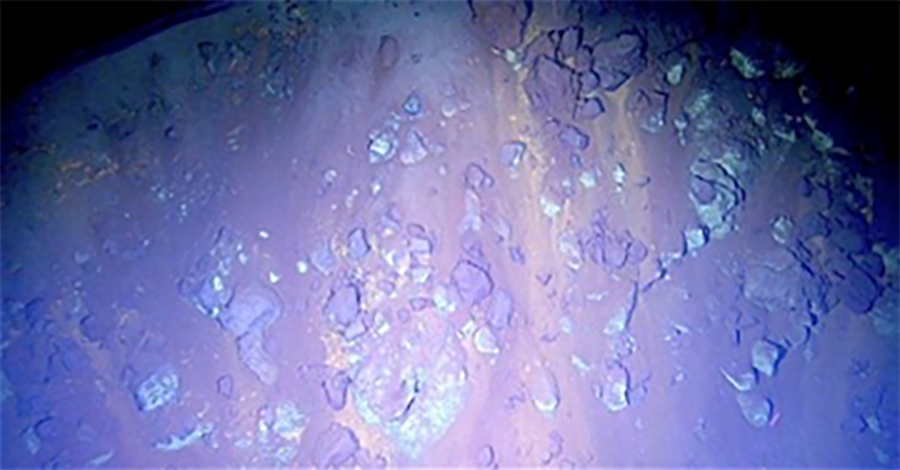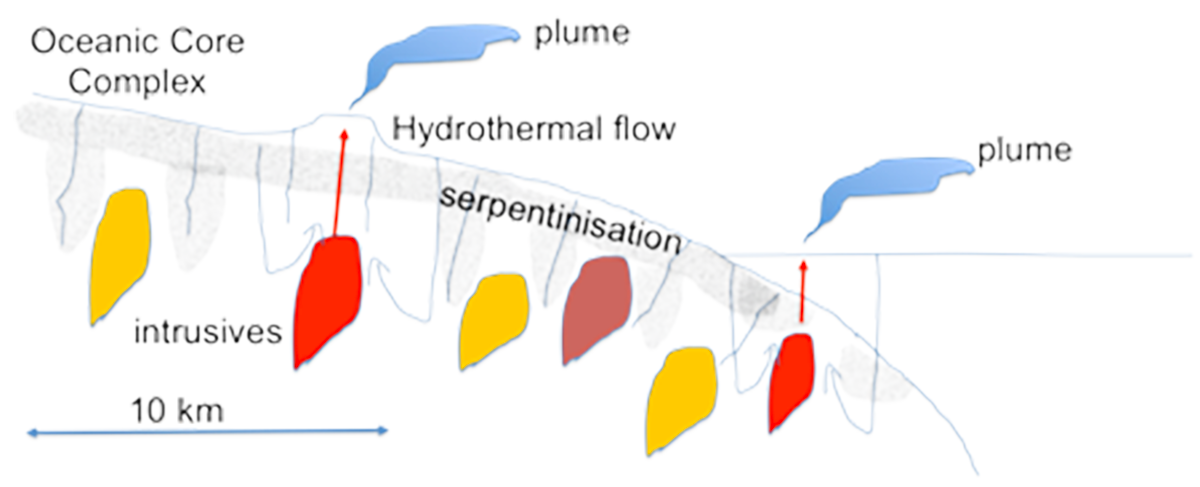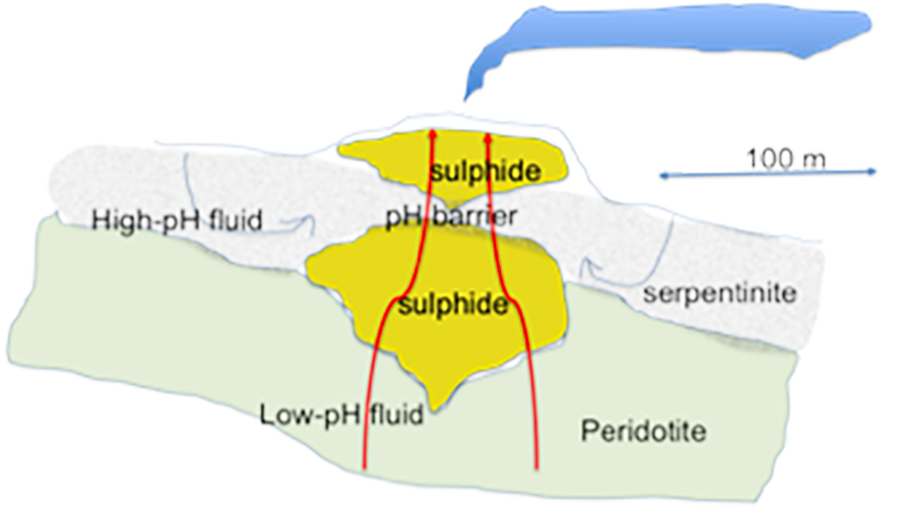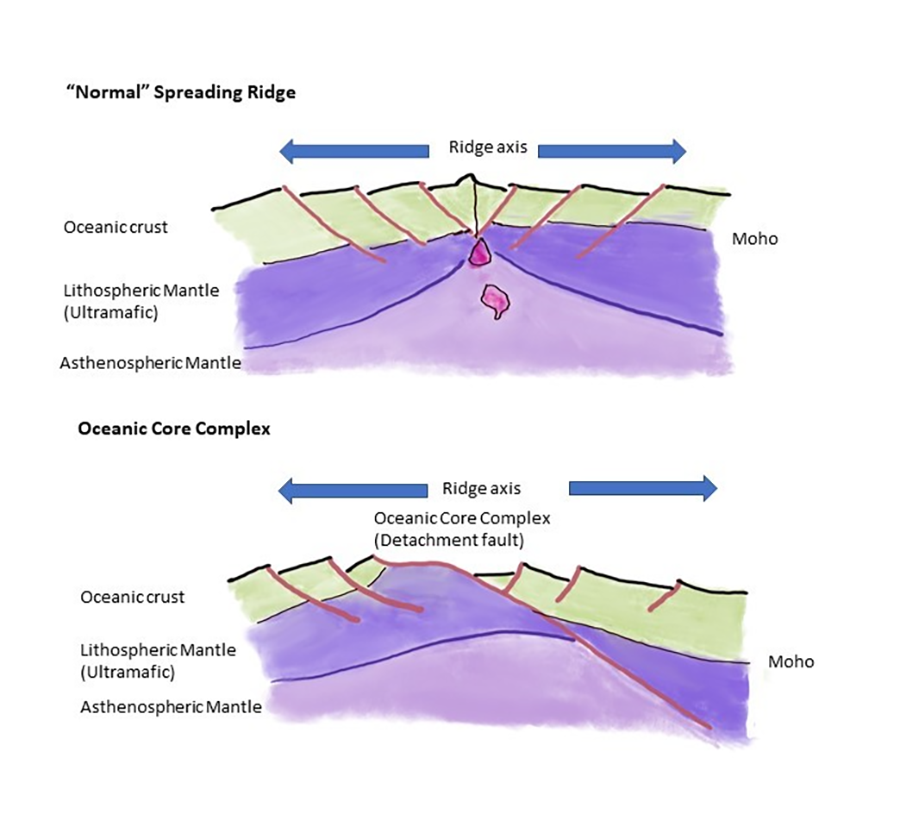Hydrothermal seafloor massive sulphide (SMS) deposits are formed by seawater circulating through the hot rocks beneath the ocean floor at mid-ocean ridges, where they strip out various elements, particularly metals, which are then deposited at the seabed as they emerge and cool at hot water vent systems.

Most of these vent systems have been within the active volcanic zone at the ridge axis. Recently, though, vent systems have been found at large faults which expose rocks of the oceanic mantle at the seabed.

This presents a paradox: most of the vents occur at very active ridges with fast spreading rates, but the largest hydrothermal SMS appear to occur on these detachment faults (also called oceanic core complexes), at “amagmatic” ridges with slower spreading rates, and very limited volcanic activity.
These ultramafic-hosted seafloor massive sulphides (µSMS) form some of the largest deposits known, hosting high metal concentrations of Au, Cu, Ni, and E-tech elements (Co, Pt).

In contrast to the volcanic-hosted SMS deposits, which are (relatively) well understood, the formation of these µSMS is enigmatic. For some µSMS, vent-fluid chemistry indicates the potential for extensive sub-seafloor metal precipitation, possibly by interaction with pH barriers due to the alteration of the igneous ultramafic rocks to serpentinite.

The physical, chemical and microbial mechanisms affecting µSMS after their formation, which are likely to be critical for their preservation, are also poorly understood.
Testing hypotheses
Our study aims to test the hypothesis that µSMS deposits form extensive sub-surface mineralisation and undergo significant post-formational modification at and beneath the seafloor under the influence of highly variable pH conditions as a result of interaction with ultramafic rocks and during serpentinisation.
Our approach involves two ocean-going expeditions to the largest known and best characterised µSMS field at 13° 30′ N on the Mid-Atlantic Ridge.
- Image the 3D structure and composition of the deposit using electromagnetic induction and inverted down-hole seismic tomography, seismic-while-drilling, with surface mapping and sub-seafloor drilling (recovering host rocks, sulphides, sediment and fluids).
- Investigate the formation, recrystallisation, metal mobilisation, alteration and penetration by seawater by measuring the mineralogy, geochemistry and isotope signatures of the samples.
- Identify the heat source driving deposit formation and host-rock interactions using hydrothermal fluid samples.
- Constrain metal mobility during later alteration and the history of hydrothermal activity from studies of metalliferous sediments and hydrothermal fluid samples.
- Ages of these processes will be constrained by radiometric dating.
- Rates of processes will be constrained by in situ and lab-based abiotic oxidation and microbial alteration experiments.
- Construct a coherent understanding of the formation and preservation of these large polymetallic µSMS deposits by integrating the results using thermo-physio-chemical numerical modelling.
Despite being technically ambitious, our experience from previous seafloor minerals projects (the Blue Mining project and MarineE-tech project) has allowed us to develop innovative strategies for investigating and drilling seafloor and sub-seafloor mineral deposits at great depths in the ocean.
Mid-ocean ridges

Mid-ocean ridges are plate boundaries, where new seafloor is created by upwelling magma and volcanism.
This creates the “normal” oceanic crustal profile of volcanic rocks, and intrusive rocks, overlaying gabbros, all above cooled mantle ultramafic (silica poor, magnesium rich) rocks (peridotites, harzburgites, dunites, and others), which are often altered to serpentinites.
At some ultra-slow spreading rates (<1cm yr−1) volcanic activity shuts down, and all the plate separation is taken up on large, gently-dipping detachment faults, also called oceanic core complexes, so that the mantle rocks are exposed at the seabed.